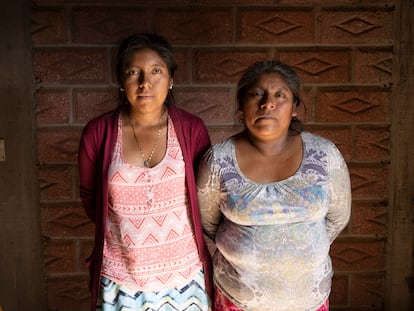Iztapalapa: How Mexico City’s most dangerous borough is breaking the stigma
The municipality has opened cultural and sports centers, painted more than 7,000 murals and inaugurated the longest cable car in Latin America

On October 9, actress Mercedes Hernández won a coveted Ariel Award for her role in the film Sin señas particulares (or, Identifying Features), which swept up numerous prizes at the event to recognize excellence in Mexican cinema. Three days later, she is sitting on a school chair giving an acting class to a group of students in a classroom at the foot of Cerro de la Estrella, a 2,613-meter high mountain in Iztapalapa, east of Mexico City. It is the outskirts of the outskirts.
Hernández explains the keys to a successful audition to the students, who come every week for the free class. The lessons take place at Utopías, the name given to the large sports and cultural centers in Iztapalapa that have changed the face of what was once the most dangerous municipality in the country. Hernández’s lesson that day is about pride; convincing the group that making films is not just for people who are blonde, tall and white. Pride has also become the new hallmark of Iztapalapa, which has become an official symbol of what is possible, city officials traveling to other countries to explain the changes underway in the borough, and to remind the world that it is not the “dumpster” of Mexico City.
Pride now abounds in Iztapalapa, which, with two million inhabitants, is one of the most-populous fringe suburbs in the Americas. In the 1960s and 1970s, hundreds of thousands of families arrived at the spot empty-handed. There, among the hills, cornfields and nopal plantations, they found a place to build a home. Fifty years later, Iztapalapa is an outlying suburb with the size of a city and the shape of a shanty town. It’s the home of Aztec ruler Cuitáhuac, Mexican band Ángeles Azueles and boxing champion Lupita Bautista. And it’s also the home of half the capital’s prison population. It also has more records to its name: a few months ago it became the city with the largest cable car in the Americas (10.6 kilometers), the largest number of murals (more than 7,000) and the best-lit street in the country. This last measure was not intended just for show, but rather to stop women from being murdered. “The change is beginning with projects, as well as by dignifying public spaces and giving youngsters opportunities and quality of life. I live here and I want a different Iztapalapa for my child,” says Hernández.
Iztapalapa is still synonymous with violence and state neglect. Since data first began to be counted and compared, it has constantly figured among the top-10 most-violent municipalities in Mexico. But not in the last two years. According to the Mexican government’s Secretary of Citizen Safety (SSPC), it did not even feature in the top 15.
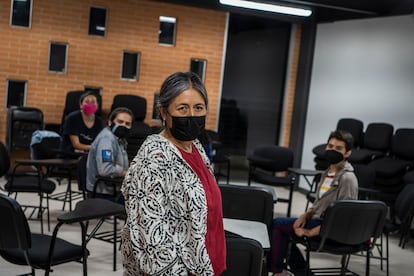
Part of the secret lies in classrooms like the one where Hernández is teaching five people about cinema. The classroom is in one of the 12 Utopías that have been built in Iztapalapa. These cultural and recreational spaces are the size of shopping malls, and thousands of youngsters go there each day to learn theater, photography, music, mural painting, boxing, athletics and swimming, among other subjects. The complex has auditoriums, running tracks, shelters for women, artificial lakes, skate parks and an ice rink. The Utopías are the focal point of the local government’s strategy to use social programs as a way to address the lack of opportunities and stop crime. Three years ago, Iztapalapa had just one pool for two million people. Now there are 12, including an Olympic pool.
One of Hernández’s students, Susana Vidal, who is a teacher of children’s theater, found out about the cinema class when she was looking for work and decided to sign up. “The teachers have a very high level and here I feel calm, safe,” she says, as she sits on one of the school chairs. Three years ago, this spot was the largest car junkyard in Mexico City. Since Vidal began class, she is no longer among those who neither study nor work – the so-called NEETs that authorities worry are easy recruits for crime.
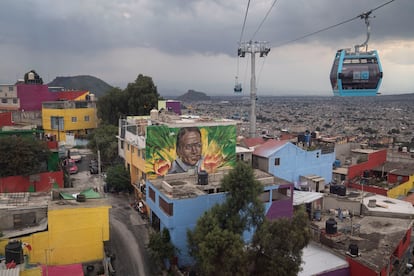
Ermita Iztapalapa street can be seen from a plane. This snake of light was considered a no-go area after 10pm not long ago, but now it shines like an airport runway. The street, which is the main avenue into Iztapalapa, is part of the “Safe streets” plan, which has reduced attacks against women by half.
Public works can change the face of the city. This was the case in Bogotá with the bus transit system TransMilenio, in Medellín with the gondola lift system Metrocable and in Río de Janeiro’s shanty towns, where graffiti has transformed the landscape. Iztapalapa has combined both measures. At the beginning of August, it inaugurated the 10.6-kilometer-long Cablebús, the longest cable car in Latin America, according to the local government. This futurist mode of transport, made from methacrylate, travels over the hills of Santa Catarina. Nearly 1,500 shops and food stores have opened near the cable car and its stations. Meanwhile, nearly 7,000 murals have brought color to 239 neighborhoods where the only hues previously had been the grey of concrete, water tanks and corrugated iron, smashed with glass bottles. “Less graffiti is seen because the kids respect the murals. People like for their street to look pretty and are fighting to keep it that way,” says Víctor Alarcón, who is inside a drink store, painted brightly in green with two large hummingbirds.
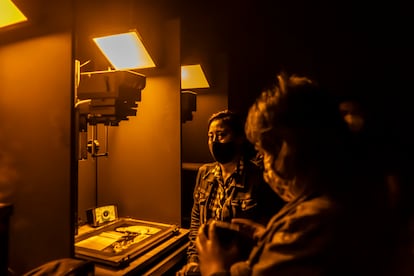
If Mexico was considered the backyard of the United States, Iztapalapa was the “dumpster,” says the mayor of Iztapalapa, Clara Brugada, from her office. “We were once known as ‘Iztapalacra’ [a play on the word lacra, meaning scourge]. People who were looking for work tried not to say their address because it was synonymous with crime and drug dealing. Being from here came with stigma.”
Brugada, who is a member of Mexico’s governing party Morena, is the driving force behind the changes in Iztapalapa. She is a favorite of Claudia Sheinbaum, the head of the Mexico City government, and Mexican President Andrés López Obrador, who have given resources and political support to her mission. López Obrador, for his part, has not forgotten that when he became the head of the Federal District in 2000, it was Iztapalapa that gave him the last-minute victory when it seemed that his conservative rival Vicente Fox was ahead. Brugada is taking the lead in the Mexican president’s “Fourth Transformation” – or 4T – campaign promise to eliminate privileged abuses, achieving strong results both on the street and at the ballot. She won more than 360,000 votes at the local elections in June, making her the most-voted mayor in Mexico City. This was in stark contrast to the performance of other politicians from Morena, which lost control of most of its city halls.
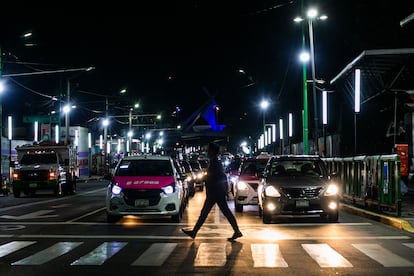
But there is a trick to this kind of model for preventing crime. The number of police patrols on the street has quadrupled, from 172 to 564; the number of police officers per 100,000 inhabitants has doubled and the number of security cameras has gone from 3,000 to 9,000. According to the National Survey on Public Safety, 79% of the population of Iztapalapa feels unsafe and it continues to be the borough with the highest crime rate. But recently, something as simple as the opening of 10 public drug-addiction centers in the area hardest hit by drugs happened. “Being from Iztapalapa came with stigma. During film shoots, they only brought me there to film violent scenes,” says Hernández. “Now they are coming to see to find out what is happening there.”
Tu suscripción se está usando en otro dispositivo
¿Quieres añadir otro usuario a tu suscripción?
Si continúas leyendo en este dispositivo, no se podrá leer en el otro.
FlechaTu suscripción se está usando en otro dispositivo y solo puedes acceder a EL PAÍS desde un dispositivo a la vez.
Si quieres compartir tu cuenta, cambia tu suscripción a la modalidad Premium, así podrás añadir otro usuario. Cada uno accederá con su propia cuenta de email, lo que os permitirá personalizar vuestra experiencia en EL PAÍS.
¿Tienes una suscripción de empresa? Accede aquí para contratar más cuentas.
En el caso de no saber quién está usando tu cuenta, te recomendamos cambiar tu contraseña aquí.
Si decides continuar compartiendo tu cuenta, este mensaje se mostrará en tu dispositivo y en el de la otra persona que está usando tu cuenta de forma indefinida, afectando a tu experiencia de lectura. Puedes consultar aquí los términos y condiciones de la suscripción digital.
More information

The death of the last glaciers in Mexico
Archived In
Últimas noticias
Welcome to the post-religion era: The idea of Christianity as the absolute truth has become obsolete
‘I thought you would like it’: The risky sexual practice popularized by TV shows and TikTok
The digitalization of tourism: ‘They promise experiences and gave us the worst possible one’
Mexican peso defies uncertainty with forecasts of a new period of stability in 2026
Most viewed
- Sinaloa Cartel war is taking its toll on Los Chapitos
- Reinhard Genzel, Nobel laureate in physics: ‘One-minute videos will never give you the truth’
- Oona Chaplin: ‘I told James Cameron that I was living in a treehouse and starting a permaculture project with a friend’
- Why the price of coffee has skyrocketed: from Brazilian plantations to specialty coffee houses
- Silver prices are going crazy: This is what’s fueling the rally

